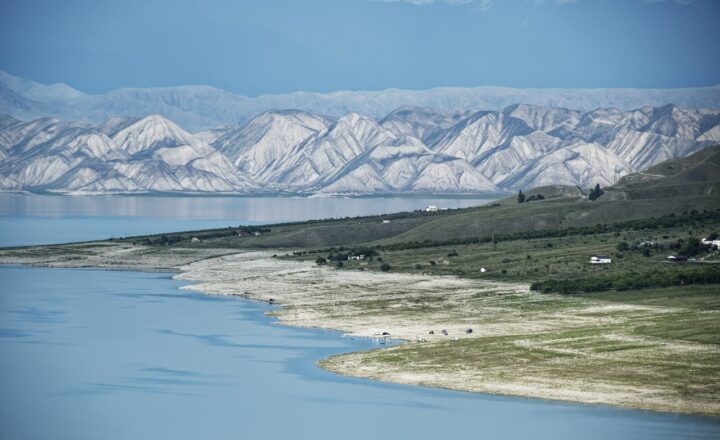The Role of Underground Networks in Nature and How They Inspired Human Systems Like the Internet
November 17, 2024

Underground networks are the unsung heroes of the natural world, playing pivotal roles in ecosystems that often go unnoticed. These systems, composed of intricate web-like structures, not only facilitate communication and resource sharing among various organisms, but they have also inspired human innovations, notably the creation and functionality of the Internet. In this article, we will explore the fascinating world of underground networks, their significance in nature, and how they have influenced human technology.
1. Understanding Underground Networks in Nature
Underground networks are primarily composed of mycorrhizal fungi, root systems, and even the burrowing activities of animals. These networks create a complex web of communication and nutrient exchange that is vital for the health of ecosystems. Let’s dig deeper into each component:
– **Mycorrhizal Fungi:** These fungi form symbiotic relationships with the roots of plants. They extend their hyphal networks into the soil, increasing the surface area for nutrient and water absorption. In return, the plants provide the fungi with carbohydrates derived from photosynthesis. This relationship allows for a sharing of resources between plants, which can be crucial in times of scarcity.
– **Root Communication:** Plants are not as immobile as once thought. Research has revealed that they use chemical signals to warn their neighbors about pests or diseases. Through their underground root systems, they can send distress signals, prompting nearby plants to bolster their defenses.
– **Animal Influence:** The behaviors of burrowing animals, such as earthworms and rodents, create tunnels that aerate the soil and allow water and nutrients to reach plant roots more effectively. These networks can also provide pathways for the movement of spores and seeds across landscapes.
These networks serve as transportation systems for nutrients, information, and even mutual aid among various species, demonstrating the importance of interconnectivity in maintaining healthy ecosystems.
2. The Structural Similarities with Human Systems
The complexity and efficiency of underground networks have been a source of inspiration for human developments, particularly in the realms of technology and infrastructure. The following sections will highlight some critical parallels:
– **The Internet as a Network:** Just like mycorrhizal networks, the Internet operates on principles of connectivity and communication. A web of servers, routers, and cables facilitates the exchange of information on a global scale. This system allows for decentralized communication, meaning that no single entity controls the entire network, similar to how no one plant controls a mycorrhizal network.
– **Resource Sharing:** In nature, underground networks allow for the sharing of resources among plants. Similarly, Internet protocols enable the sharing of data across various platforms and devices, leading to innovative collaborations, much like how organisms adapt and evolve through shared resources in their ecosystems.
– **Adaptability:** Life in underground networks is characterized by adaptability. Fungi can adjust their growth patterns based on their environment, much like how adaptive technologies allow the Internet to thrive under different conditions. Just as nature tends to forge connections to fulfill needs, humans have built the Internet into a robust system, capable of adapting to the evolving demands of users.
3. Case Studies: Nature-Inspired Technology
Several innovative technologies draw inspiration from the structure and functionality of underground networks. Here are a few examples:
– **Swarm Robotics:** Researchers have developed robotic systems that mimic the behavior of ants. These robots communicate and collaborate to perform tasks such as exploration and mapping. The collective behavior exhibited by these robots is reminiscent of how ant colonies function and share resources.
– **Network Theory in Urban Planning:** Urban planners have adopted principles observed in mycorrhizal networks to design effective transportation systems. By placing emphasis on decentralized routes that prioritize connections, cities can become more resilient, reflecting the efficiency seen in nature.
– **Decentralized Internet Networks:** Inspired by biological networks, some innovators are designing decentralized Internet networks that function without a central authority. This reflects how underground networks share power and resources, promoting resilience and adaptability in the digital age.
4. The Importance of Protecting Underground Networks
The health of underground networks reflects the state of the environment. Deforestation, pollution, and climate change threaten these connections. Recognizing their importance is essential not only for preserving biodiversity but also for sustaining human technologies that depend on natural systems. Here are practical steps to protect these ecosystems:
– **Promote Sustainable Practices:** Encouraging permaculture and organic farming helps maintain mycorrhizal networks and soil health. Minimizing chemical inputs supports the biodiversity necessary for resilient underground networks.
– **Conservation Efforts:** Protecting natural habitats and restoring degraded lands ensures that underground networks remain viable. Collaborating with local organizations can facilitate restoration projects that benefit both nature and human interests.
– **Education and Research:** Increasing public awareness of the benefits of underground networks can foster collective action towards conservation initiatives. Supporting research that explores the complexity of these networks can yield invaluable insights for future innovations.
5. Conclusion
Underground networks are vital to the survival of ecosystems and offer profound lessons for our technological advancements. As society progresses, understanding and mimicking the principles laid down by nature can foster more sustainable and efficient systems. By appreciating the role of underground networks, we can draw inspiration for solving complex problems and creating technologies that mimic the resilience and adaptability of nature itself.
The synergy of life beneath the surface is a reminder of how interconnected everything is, inspiring an ongoing dialogue of how these intricate systems can teach humans about collaboration, sustainability, and innovation in our rapidly advancing world.







